When the value added to a good through the production in a Party satisfies some
value content, the good can be qualified as an originating good of the Party.
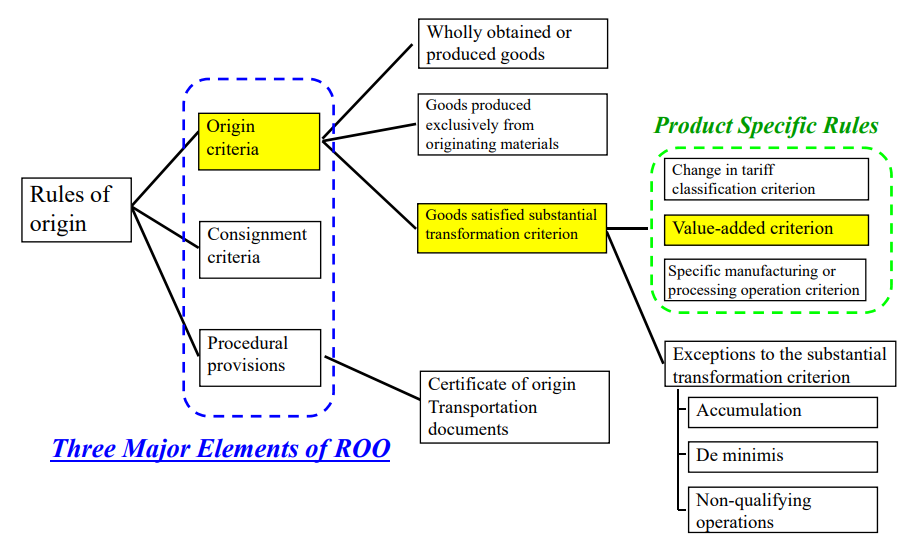 Retrieved from: Outline of Rules of Origin for EPA in Japan
Retrieved from: Outline of Rules of Origin for EPA in Japan
Regardless of changes in its tariff classification, a good is considered as originating when
the value of the product is increased up to a specified level expressed by an ad valorem percentage.
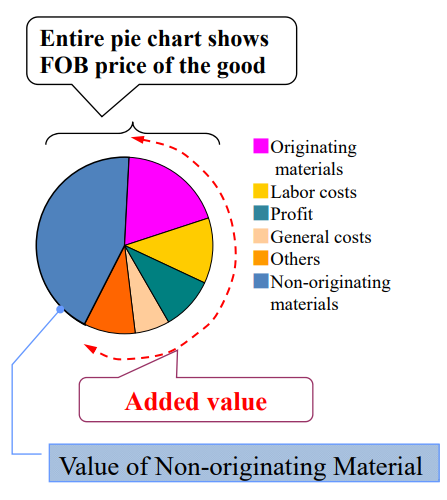
Retrieved from: Outline of Rules of Origin for EPA in Japan
RVC is the Regional Value Content of a good, expressed as a percentage.
QVC is the Qualifying Value Content of a good, expressed as a percentage.
(RVC and QVC are same meaning words)
VNM is the value of non-originating materials used in the production of a good.
Table of Contents
Method of “Value-added criterion”
The rules-based on a value-added/ad-valorem criterion may largely be
described in two distinct ways:
1.Build-down method
a maximum allowance for non-originating materials
(maximum third country content allowance), meaning that a final product can be
considered as an originating product provided that the foreign inputs do not
exceed a certain threshold; or

2.Build-up method
a minimum requirement of domestic content (minimum local content
requirement)

Example Case study of “Value-added criterion”
Build-down method Case
Product-Specific Rules(PSR) for a passenger vehicle of heading 87.03 under
Japan-Australia EPA:
the value added in the country of manufacture (Qualifying Value Content) is not
less than 40% and the last process of production has been performed in the
exporting party
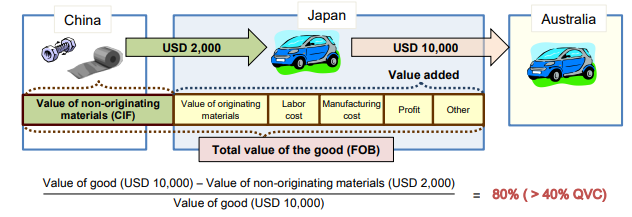
The QVC(RVC) of the vehicle is 80%. As the vehicle meet the ROO requirement under
Japan-Australia EPA, it is an originating good.
Build-up and Build-down method Case
Product-Specific Rules(PSR) for a Biscuit of heading 1905 under
ASEAN Trade In Goods Agreement(ATIGA):
A RVC of not less than 40 percent of the FOB value.
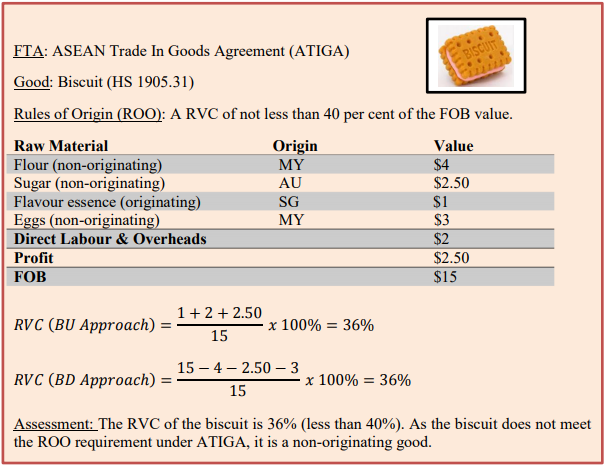
The RVC of the biscuit is 36%(less than 40%). As the biscuit does not meet
the ROO requirement under ATIGA, it is a non-originating good.
Comparison of Build-up and Build-down
Hair curling iron (8516.32) Case
An electric smoothing iron (subheading 8516.40) is made in TPP Party A from
non-originating parts (8516.90).
The value of the materials and costs associated with the production of the good are
as follows:
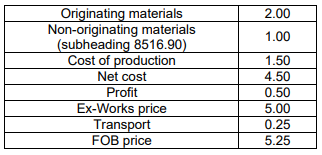
Retrieved from:Comparative Study on Preferential Rules of Origin
(a) Using the build-up method
Regional value content requirement (build-up method)
In case of the build-up method, the value added requirement (regional value
content of not less than 35 per cent) can also be used.
RVC = 2.00 x 100 / 5.25 ≈ 38.1%
This rule is fulfilled since the RVC is 38.1% when using the build-up method.
(b) Using the build-down method
Regional value content requirement (build-down method)
The value added requirement according to the build-down method (regional value
content of not less than 45 per cent) can be used.
FOB price US $ 5.25; the value of the non-originating smoothing iron parts is US
$ 1.00.
RVC = (5.25-1.00) x 100 / 5.25 ≈ 81%
This rule is fulfilled since the RVC is 81% when using the build-down method.
